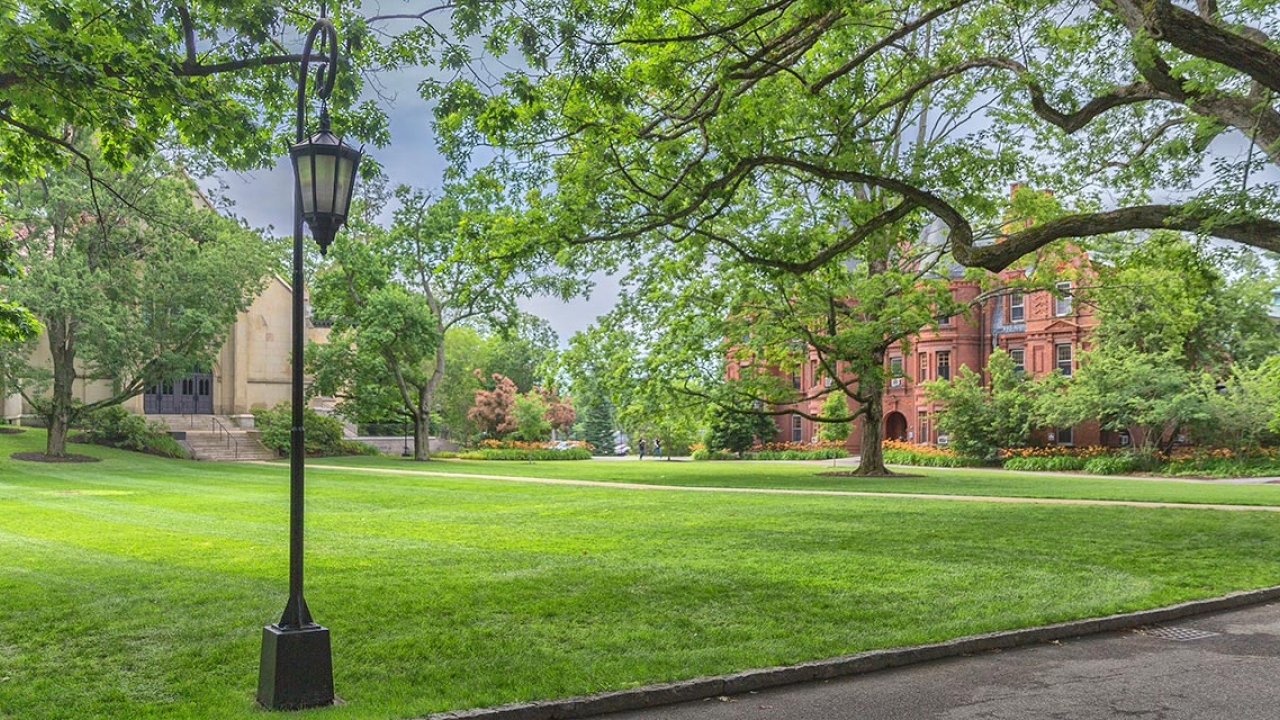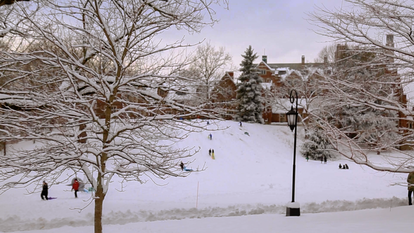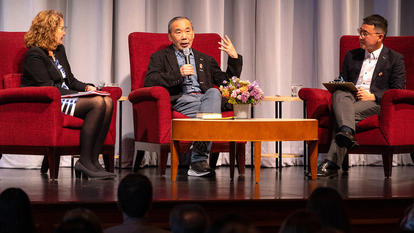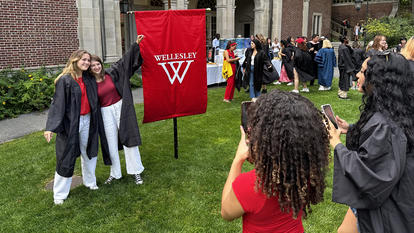Wellesley’s Beloved Lamps Continue to Light the Way

For nearly 100 years, Wellesley’s beloved lampposts have lit the way on campus, both literally and figuratively. Yet while many love the lamps so much that they keep pictures of them in their homes, tattoo them on their shoulders, or wear lamppost earrings, very few know the history and symbolism of these distinctive fixtures.
The short version of the story is that Ralph Adams Cram, the supervising architect for the College after the great fire of 1914 destroyed College Hall—the heart and soul of campus—proposed a design that combined a lantern and a shepherd’s staff, based on Psalm 119:105: “Thy word is a lamp unto my feet, and a light unto my path.”
“That’s a typical Cram idea of working meaning into something mundane, a thought-trigger to something larger and bigger than simply a street light. Admirable,” said Peter Fergusson, retired Theodora L. and Stanley H. Feldberg Professor of Art, who co-authored the book The Landscape & Architecture of Wellesley College with James O’Gorman, retired adjunct assistant professor of art, and John Rhodes, retired Grace Slack McNeil Professor of the History of American Art.
The longer version of the lamps’ story begins in 1916, when the College was making plans for the construction of the new Academic Center (now the Academic Quad). The Board of Trustees approved working drawings for Founders Hall on April 2, 1917, four days before the United States entered World War I.
Within weeks, a new seal was designed “with Mr. Cram’s approval” to replace the one that had been used since the College’s founding. The original seal, still used by the Alumnae Association, inscribed the College’s motto, Non ministrari sed minstrare—“Not to be ministered unto, but to minister”—around a Chi-Rho symbol, the first letters of Χριστός, Christ’s name in Greek.
The new design was a medieval-style coat of arms that featured the College’s motto circumscribing an open ancient book (the book of knowledge), the words incipit vita nova—“thus begins a new life”—and a crosslet in a field between two wells. The crosslet was from the family arms of College founder Henry Durant. The wells alluded to Isabella Pratt Welles, after whom the College and the town were named. (Her husband, horticulturalist and philanthropist Horatio Hollis Hunnewell, was a generous supporter of the College.)
The difference between a seal and a coat of arms may seem inconsequential to 21st-century readers, but “a ‘seal’ certifies a document, where a ‘coat of arms’ proclaims a lineage. Thus a coat of arms has a crusading edge,” said Fergusson.
When it came time to build new road and path lighting, Cram, perhaps the most famous architect in the U.S. at that time, conceptualized and approved the design. The lamps, which were lit by electricity rather than gas, were installed on campus in 1926, a time when women were taking on roles traditionally held by men and could finally vote and hold public office, thanks to the passage of the 19th amendment in 1920.
As Wellesley continues to change with the times, so do the College’s roughly 500 lamps, which Facilities Management has been changing to LED retrofits for the past few years. “We are about 80 percent refit at this point,” said John Brown, maintenance services manager.
Perhaps the lamp’s design has endured because of the meaning and potential it represents. “Symbols are prompters, thought encoded into architecture,” Fergusson said.



